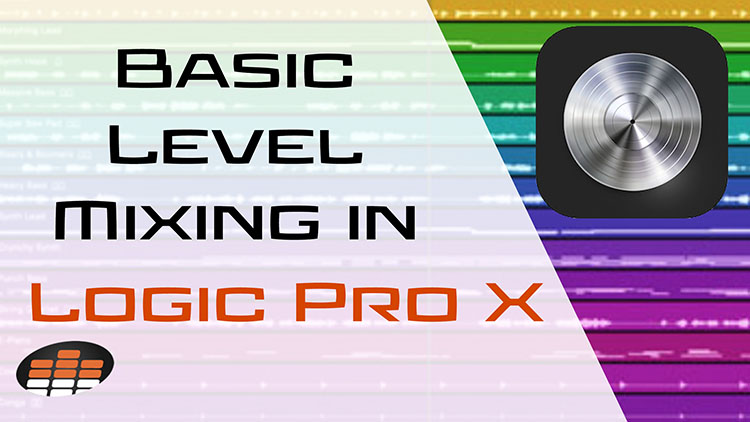Mark Goslett is a London-based music producer and member of the Music Producers Guild. His unrelenting pursuit of excellence in the studio, and decades of work as a musician has brought him to the forefront of the music industry, where his credits include: TV commercials, emerging artists, and a profusion of live sound engineering engagements.
He’s an expert in Apple’s Logic Pro X software, and in this clip he shows how to go about mixing basic levels!
Opening the Mixer Window and Color Coding Tracks
Before you dive in and start moving faders, you’ll need open up the mixer window using the keyboard shortcut Command 2. This will give you a nice fullscreen view of the mixer rather than a smaller window inside the arrangement view.
It’s also a great idea to color code your tracks to keep things tidy and easily identifiable. This is especially important the more tracks you have to mix! For example, you can start making all of your drum/percussion tracks the same color. Make a selection by clicking the first track and dragging to the last one. Open up the color picker using Option C and choose whichever makes the most sense to you!
Setting Basic Levels: The Start of a Mix
Once you’ve organized your session to your liking, you can start setting levels! You’ll first want to get an idea of the overall dynamic range of the song, which can be done by looping a section of a verse and chorus. Listening to this will help you determine where things should begin to sit relative to one another.
At this point you can get hands on and move faders! You’ll likely find lots of instruments that are way too loud, so you can tuck those in under the others. You’ll also notice in Logic Pro X that selecting more than one track and moving one’s fader will move all the selected tracks’ faders simultaneously. This is great for, say, a left and right rhythm guitar, or any other stereo pair of instruments.
Mixing basic levels is a matter of taste and how you interpret the song, so it’s best to just jump in and get started!





